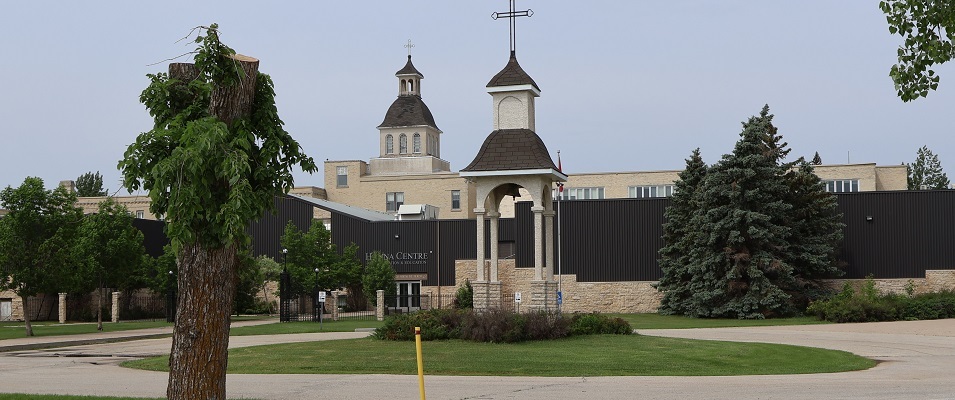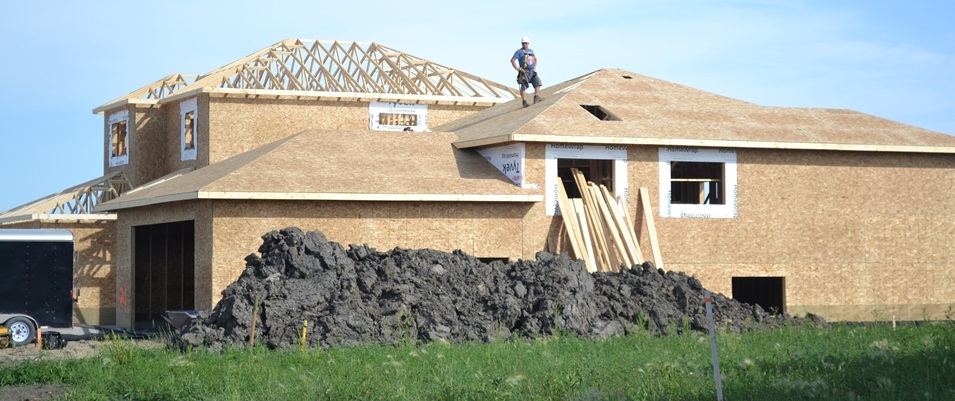
The worst of the pandemic may feel like history. But in its wake, Manitobans continue to take some big hits. Sky-high inflation and rising interest rates are affecting people of all income brackets.
And the ongoing crisis in the province’s healthcare system can no longer be ignored either.
New reports emerge almost daily, exposing the reality of healthcare staff shortages which are resulting in long ER wait times, intensive care unit closures, and increasingly delayed diagnostic procedures and surgeries.
“Our nurses are burning out at a rate that I’ve never seen before,” said Darlene Jackson, president of the Manitoba Nurses Union, in a press release on October 24.1
These reports should be raising alarm bells not just for overworked healthcare staff, but for every resident of the province. Whether people need medical attention now or may need it in the unforeseeable future, they should be concerned about the current state of affairs.
Winnipeg Hospitals in Crisis
On October 11, the Manitoba Nurses Union (MNU) reported the closure of the Grace Hospital ICU due to 13 nurse resignations since the start of summer. Before the closure, each nurse had been responsible for three acutely ill patients—three times the normal one-to-one ratio.
The MNU publicly shared an SOS they received from one of the nurses on staff there.
“We are told to ‘just try our best,’” the unidentified nurse wrote. “We’re drowning, and we’re not OK.”2
This past week, the Grace Hospital also announced the cancellation of an additional 26 scheduled hip and knee surgeries.
An advocacy group for medical physicians across the province, Doctors Manitoba, managed an online dashboard that tracked surgery backlogs during the pandemic. On its last update, from June 28, the backlog of patients waiting for diagnostics and surgeries showed well over 100,000. More than 30,000 of those had already been delayed from previously scheduled appointments.
Doctors Manitoba cites the shortage of nurses and technologists as the main reason for the backlogs. It’s a problem, they say, that started long before the pandemic.
Winnipeg’s Health Science Centre has been in the news for months now due to ER staff shortages. The department has been forced, at times, to close up to half of its beds and draw on part-time staff and nurses from other departments to fill the gap.
“I hear from nurses every day that are looking for somewhere else to work other than the public system,” Jackson has said.3
The St. Boniface ER made the most recent news as a doctor and former president of Doctors Manitoba, Dr. Kristjan Thompson, admitted to the press that, for the first time in his medical career, he’d considered quitting too.
Rural Southeast Hospitals No Better Off
For residents of the rural southeast, things are not looking much more optimistic.
The media spokesperson for Southern Health-Santé Sud (SH-SS) responded to The Citizen on behalf of the head of human resources, René Ouellette.
“Southern Health-Santé Sud is experiencing the same healthcare staffing shortages that is affecting the rest of Manitoba,” they said. “The reasons… are multifactorial. A significant portion of our workforce has reached retirement age. This, in combination with COVID, resulted in a loss of personnel within our workforce. As COVID continued and workloads increased, staff burnout became increasingly evident.”
Compounding the problem, the SH-SS spokesperson adds, is the fact that ER visits have gone up from previous years, with higher numbers of patients experiencing severe conditions that can’t be addressed in a physician’s office.
In the meantime, they say efforts are being made to fill the staffing gaps, and these include much of the same strategies as those being employed by the Winnipeg Regional Health Authority: encouraging remaining staff to work overtime and reassigning other departmental staff to the ER, including healthcare aides and clerks.
According to the media spokesperson for the Manitoba Nurses Union, asking nurses to fill the gaps by taking two or more shifts back-to-back has been standard practice but only serves to exacerbate the problem of burnout among nurses and further reduces the quality of patient care.
ER Patients Tell Their Stories
Paige Malthouse of Niverville was a patient in the Steinbach Bethesda Regional Health Centre’s ER in September of this year. She arrived at 9:30 a.m. experiencing abdominal pain so severe that she was buckled over at the waist.
A triage nurse asked about her symptoms early on and then the wait began. Over the course of the next few hours, Malthouse received Tylenol for her pain, and blood and urine samples were taken.
What she didn’t receive was any indication as to how long the wait might be.
“There were maybe 20 different patients that cycled through while I was there,” says Malthouse. “I felt [the long wait] was purely about staffing levels. At about 10:00 p.m., I asked how long it would be as I needed to be picked up by my husband and he had to get our kids out of bed to come get me. She said I was next, but she wasn’t sure how long that would take.”
Fourteen hours after her arrival at the ER, Malthouse was finally seen by a doctor. An ultrasound was performed and within 30 minutes she had a diagnosis: gallstones.
Malthouse was given a prescription for pain medication, a referral for surgery, and sent home with instructions to return if the medication didn’t alleviate the pain within two hours. This could be an indication, they told her, that her gallbladder was about to rupture.
Emma Dequier is a Ste. Agathe resident whose medical troubles began in 2020 at the age of 16. Like Malthouse, Dequier also found herself at a hospital—in her case, Victoria Hospital—with excruciating abdominal pain.
She waited for hours before a triage nurse told her that, due to her age, she needed to go to the HSC Children’s ER for help. She was turned away.
At HSC, Dequier says that the process of waiting started all over again and it took many hours before she underwent testing. Test results showed an ovarian cyst which was removed days later in surgery.
Months afterward, though, Dequier’s abdominal pain still persisted and she eventually returned to the HSC Children’s ER. Again, she endured a long wait before the triage nurse told her she was in the wrong ER. Dequier was now 17 years of age, rendering her an adult based on WRHA’s criteria.
She arrived at the HSC Adult ER at midnight and settled in for what would turn out to be an all-night wait. By 8:00 a.m. the next morning, a tired and frustrated Dequier left the ER without being seen. Her pain had subsided.
“It wasn’t even that busy [in the ER],” Dequier says. “There were definitely lots of people [at some points], but not like a crazy amount. So I wasn’t expecting to wait that long.”
Eventually Dequier’s family physician sent her to see a gastroenterologist who also diagnosed her pain as coming from gallstones. She was put on morphine and a waiting list for surgery.
When the pain became too much to bear, Dequier found herself at the Victoria Hospital’s urgent care clinic. After hours of waiting, Dequier was put through a barrage of tests and told that her condition had become critical.
Still, it took five days of waiting in a hospital room before the surgery was performed.
“I’ve had [more abdominal] pain events since that [surgery], but I’ve just decided not to go back to an emergency department because I just can’t do that anymore,” Dequier says.
As the third round of abdominal pain worsened, Dequier’s parents made her an appointment at a private Winnipeg clinic. This time, she was diagnosed with functional dyspepsia, a non-ulcer-related stomach pain.
“I was fortunate enough to have parents who were able to afford this private clinic through their insurance,” Dequier says. “[If not for them] I would have had to wait two years to get proper pain management. We’re in the twenty-first century and our technology is better than ever and yet we can’t seem to get proper [medical] care.”
Nevada Long is a university student and friend of Dequier’s. She tells a story that’s eerily similar.
In September 2021, Long’s car was rear-ended by a drunk driver. Long was taken to the St. Boniface ER with symptoms like nausea and a migraine that led her to believe she may have whiplash and a concussion.
She arrived in the ER at 9:00 p.m. and didn’t leave until noon the next day. There were about 40 others in the waiting room when she arrived.
“It seemed, from my perspective, that it was first-come, first-served because most of the injuries were the same level [of severity],” Long says.
An hour after her arrival, Long was questioned by a triage nurse regarding her symptoms. That was the last time she’d talk to any healthcare personnel for the next 13 hours.
Long was 17 years old at the time. With no way to charge her cell phone, Long was unable to reach out to family to let them know where she was and what had happened.
Eventually Long underwent tests and was diagnosed with a minor concussion. She was provided with no pain relief and few care instructions.
“The only thing they told me was to go and see a chiropractor,” Long says. “I kind of felt like I’d wasted my time [going there].”
In the months following the accident, Long began to experience fainting spells that left her disoriented and confused when she regained consciousness. She returned to the ER and, after an eight-hour wait, was told that the tests had revealed nothing of concern.
“The thing that upset me the most that time was the doctor that saw me told me that fainting was normal for a woman,” says Long. “And she just sent me home.”
Long’s condition worsened and she found herself in the ER seven more times with long waits and no answers.
“There was one day when it was just worse than normal,” says Long. “I couldn’t make it to the bathroom without fainting. [That time] my boyfriend took me to the Concordia Hospital… They kept me overnight until I was able to see an internal medicine specialist.”
Within 15 minutes of being tested, Long says the specialist had a diagnosis. She had a heart condition which caused her heart rate to spike when she stood from a sitting position. She’s since been put on medication and is scheduled to see a neurologist in November.
“It affects my daily life,” Long says. “Every day, there’s something that I can’t do because of it. It was really hard during the months before I was diagnosed, not having someone that could help me or guide me.”
Both Long and Dequier also have ER stories to go beyond desperate wait times and missed diagnoses.
During the many hours spent in waiting rooms, Dequier says there were times when people’s patience grew so thin that they lashed out in anger at other patients in the room since there were no healthcare staff around.
For Long, she’ll never forget the trauma she and other patients experienced one particular night in the ER waiting room.
At 3:00 a.m., a man ran through the waiting room, chased by a hospital security guard. The stranger locked himself in a nearby bathroom. Unable to convince the man to come out, an additional five security guards were called in for assistance.
Long says it took a long time for them to gain access to the bathroom. When they did, the man bolted and it took all six security guards to pin him down to the waiting room floor. In the kerfuffle, an elderly patient was knocked out of his wheelchair. Long says that a glance into the empty bathroom revealed blood-covered walls.
“Even after that incident, there was no nurse who came out to [help us],” Long says.
Nurses Union: Problems Predate Pandemic
According to the Manitoba Nurses Union, this healthcare crises should not come as a surprise to anyone. After all, they have been warning provincial authorities about imminent staff shortages for more than three years.
The Canadian Nurses Association began predicting a critical nursing shortage at least 15 years ago, they add, long before COVID-19 came on the scene.
According to the MNU spokesperson, the pandemic was the straw that broke the proverbial camel’s back.
But if the pandemic wasn’t the sole agent of the current healthcare crisis, it begs the question: what was?
The MNU has long been calling on provincial governments to invest in strengthening frontline services. Instead, they say, the past decade has been all about austerity measures that have resulted in healthcare funding cuts.
An early example was the 2012 amalgamation of Manitoba’s 11 regional health authorities into just five. It was an initiative intended to streamline the system, former Health Minister Theresa Oswald said at the time.
Five years later, in 2017, the province instructed the WRHA to cut healthcare costs by $83 million. As a result, half of the city’s ERs were closed. Some were replaced by urgent care centres which could deal only with non-urgent emergencies such as bone fractures.
“We’re moving too far, too fast on a healthcare plan that puts cost-cutting ahead of patient care,” said Michelle Gawronsky in 2017. Gawronsky was the president of the Manitoba Government and General Employees Union.
Less than three years later, Manitoba was hit by a pandemic that would rival any and all healthcare crises that had come before it.
What Is Being Done?
In an attempt to recruit new staff, SH-SS is working on a variety of strategies, including the use of social media, attending job fairs, and making presentations to graduating nurses.
As well, student incentive grants have been created and the SH-SS is working hard to convince students to do their practicums in the region to help sell them on Manitoba.
Even so, they recognize the work they have cut out for them since the nursing shortage is a nationwide problem which gives students broad opportunities for relocation.
To address the issues with more immediate solutions, SH-SS has developed a regional Emergency Department Practice Council whose mandate is to come up with solutions to improve patient flow through emergency departments.
Like most other regional health authorities across the province, the organization is relying on agency nurses—nurses who work in the private sector—to help fill the gaping holes in the public healthcare system.
According to a recent article in the Winnipeg Free Press, Manitoba’s five regional health authorities, on average, now spend 34 percent more on private nurses per month compared to one year ago.4
This, conceivably, presents a catch-22 for nurses working in the public sector, since agency nurses often work on a different payscale, are able to avoid mandated overtime, and receive stipends for travel costs.
According to the nurses union, they are already seeing many outgoing nurses simply move from the public to private sector in order to exercise more control over their careers.
The provincial government may have to act fast if the public health sector is to be saved.
“We believe that the Manitoba government needs to attract new individuals into the profession, as well as retain the ones we have,” says Darlene Jackson, president of the Manitoba Nurses Union in an interview with The Citizen. “We need to put strategies in place to bolster recruitment from other countries and make the application process for internationally educated nurses more accessible.”
Jackson adds that the province needs to offer financial incentives for those who are willing to work in remote communities.
On October 26, Manitoba Health Minister Audrey Gordon announced that the province is working on a plan to recruit, attract, and retain nurses. However, she was unable to reveal any details of the plan just yet.
In the meantime, the only tangible promise Gordon could make was that of a $12.5 million healthcare simulation training centre has been scheduled for construction at Red River College Polytechnic. That centre is scheduled to be open in 2024.



















